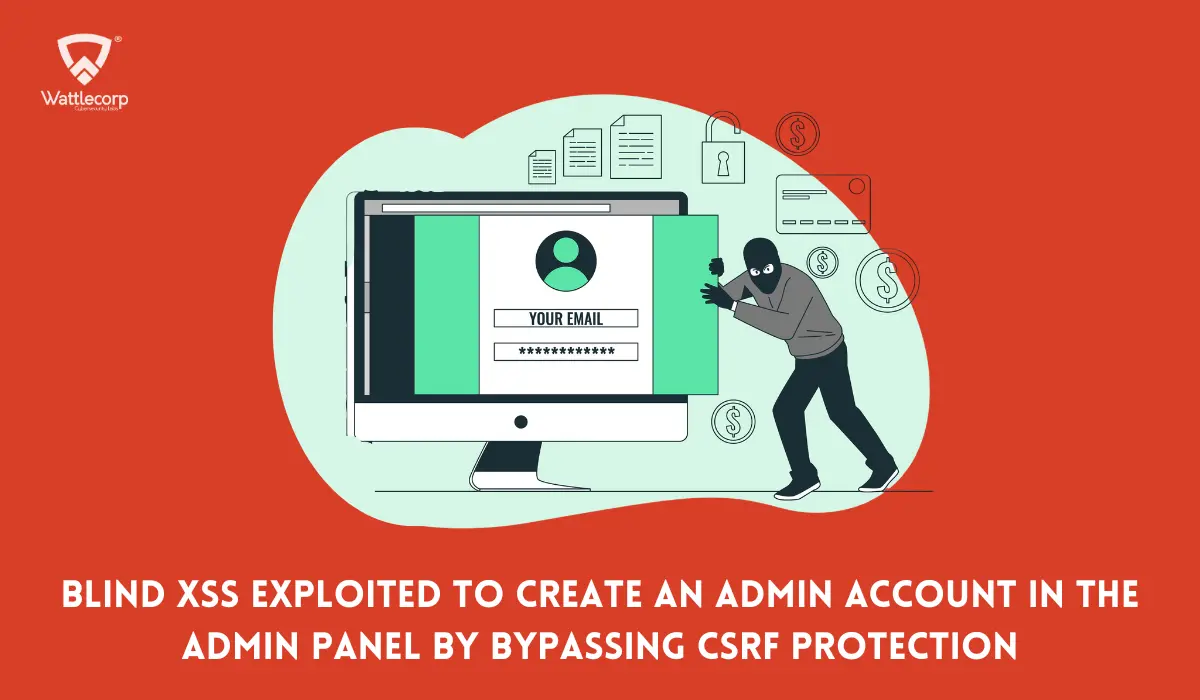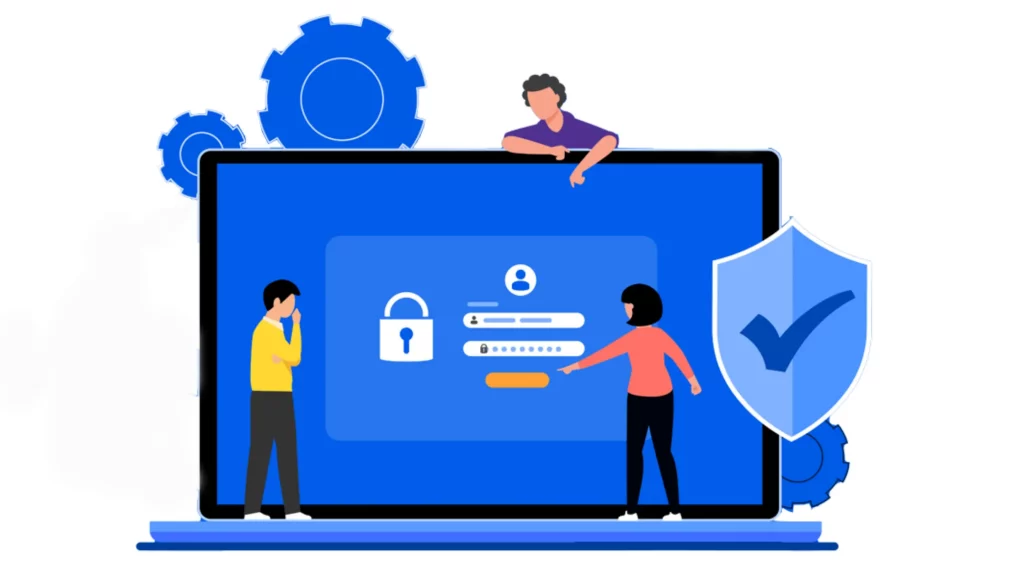SECURE YOUR BUSINESS WITH EXPERT VAPT STRATEGIES
How Secure Is Your Infrastructure? Book a Free Consultation with Wattlecorp’s Experts to identify vulnerabilities, develop a robust VAPT strategy, and safeguard your business with tailored protection solutions.

Is penetration testing and vulnerability assessment the same? Both are often misrepresented as the same by many of the people across many articles. This comprehensive guide dives headfirst into the penetration testing phases, offering a clear and concise roadmap to understanding each stage:
To simplify it, vulnerability assessment is finding how durable your office’s front door is to various attacks. Whereas, penetration testing is gaining access and going to the greatest extent possible to infiltrate the office and find the most precious cookie jar on the office table.
Introducing more technicality to the definition, vulnerability assessment is a preliminary check for threats in the application, asset, or infrastructure to find out the loopholes. And penetration testing is infiltrating the weaknesses to gain access to the sensitive data or assets stored, wherever it was supposed to be securely kept.
Table of Contents
Toggle5 Phases Of Penetration Testing
Knowing about the penetration testing phases is imperative for a security professional since it lays the most basic foundation for performing it precisely and using an effective and modern set of tools.
So, let’s have a glance at the five penetration testing phases for an in-depth understanding:
1.Recon
Reconnaissance aka recon is considered as the initial step in a penetration test. The security guy (be it good or bad) uses this phase to collect the maximum possible information about the target. It includes network-related information, operating systems, applications, software stack used, user accounts, etc.

It can be either active or passive, subject to the methods used to gather information. Active reconnaissance collects information from the target system directly; passive reconnaissance fetches data without direct interaction, which might be with the utilization of publicly available resources. Both approaches have their own benefits and are necessary to gain the full picture of the target’s vulnerability.
Also, there are other various approaches that are based on what is checked from the target. That is, foot printing through web administration using various tools such as NetCraft, Pipl, Google Finance, and Google Alerts. The website of the target organization, the representatives, competitors, technology used, etc. are determined here.
Also, there are other approaches utilizing other techniques such as web crawlers, social engineering, email reconnaissance, whois reconnaissance, DNS reconnaissance, network reconnaissance, etc. for which there are standalone sets of tools too.
2.Scanning
Once all of the necessary information has been gathered through the reconnaissance phase, it is time to move on to scanning. During this penetration testing phase , the tester employs a variety of tools to locate open ports and monitor network activity on the system being targeted. Open ports give potential access sites to hackers, and penetration testers must find as many as feasible for the subsequent penetration testing phase.
The second penetration testing phase can also be done separately from penetration testing; in those circumstances, it is known as vulnerability scanning and is often automated. However, there are disadvantages of just running a scan instead of an extensive penetration test: scanning can indicate a possible danger but cannot assess the amount of access that hackers can get. So, while scanning is critical for cybersecurity, it requires human interaction in order to realize its full potential.
3.Vulnerability Assessment
The third penetration testing phase is vulnerability assessment, through which the tester analyzes all of the data obtained in the recon and scanning stages to discover possible weaknesses and decide if they can be exploited. Vulnerability assessment, like scanning, is a helpful technique on its own but is far more effective when combined with other penetration testing steps.

A vulnerability assessment is the process of defining, detecting, categorizing, and prioritizing flaws in computer systems, applications, and network infrastructures. It additionally offers an organization with the information, awareness, and risk profiles required to evaluate and respond to environmental risks. It also aims at determining risks and the possible consequences they entail.
A vulnerability assessment notifies an organization of weaknesses in security in its environment. It also explains how to estimate the hazards associated with certain flaws. This method provides the company with a greater awareness regarding its resources, security issues, and overall risk, lowering the possibility of a cybercriminal infiltrating its systems and capturing the organization off guard.
4. Exploitation
During the penetration testing phases, the penetration tester tries to obtain unauthorized access to the target system using the identified vulnerabilities. This can include employing a variety of approaches, including brute force assaults, buffer overflows, and injection-based attacks.

The exploitation phase aims to illustrate the possible consequences of a real-time attack from bad actors, such as obtaining sensitive data or gaining unauthorized control of the target system.
This is possibly the most critical penetration testing phase since gaining access to the target system and since it involves bypassing security controls. Though system crashes during penetration testing are uncommon, testers must nonetheless exercise caution to ensure that the system is not hacked or harmed.
5. Reporting
The report provided after the final penetration testing phase helps to fix any system vulnerabilities and improve the organization’s security posture. Generating the penetration testing report demands accurately recording vulnerabilities and interpreting them so that the company may address its security concerns.
Commonly the reports include a detailed synopsis of the vulnerabilities found (including CVSS scores), a business impact evaluation, an explanation of the problems encountered during the process of exploitation, a technical vulnerability briefing, remedial guidelines, and strategic recommendations.
Types of Penetration Testing
a) Web application penetration testing
Web app security assessment helps to verify how secure your applications are from bad actors. Applications, websites, and APIs related to the web apps are tested against common and in-depth vulnerabilities procedurally. Comprehensive Web App Penetration Testing ensures that these assessments cover all critical security aspects effectively.
b) Mobile application penetration testing
Conducted before the mobile application release, mobile application security assessment helps to ensure that security measures are in place. Flaws that the app development and quality assurance team might have missed are found with this, towards delivering secure applications.
c) Network penetration testing
Network security assessment finds the vulnerabilities in your network devices and fixes them at the earliest prior to attacks. These devices are usually the entry point for a majority of the attacks, through which the attacker gets inside and steals the sensitive data.
d) API penetration testing
API security assessment helps to determine the vulnerabilities related to the application programming interface, by ensuring that it has met the security standards such as encryption, authentication, and user access. The importance of ensuring secure APIs is getting greater it being the heart of many of the applications across various infrastructures.
e) Wireless Penetration Testing
Wireless security assessment is the process of determining the weaknesses in network devices and fixing them at the right time, prior to an attacker exploiting them. It contains emulating tactics and techniques that a bad actor can utilize to infiltrate the networks or the devices.
Famous tools used in each phase of penetration testing
Using apt security tools is imperative in a corporate environment due to the enormous amount of target systems and subsystems. They help in identifying the assets and help to deliver much better results.
Classifying them based on categories can be termed as port scanners, vulnerability scanners, network sniffers, web proxies, password crackers, etc. Following are a few of the commonly used tools by penetration testers globally:
- Armitage – network attack management tool with GUI
- Nmap – network and port scanners with more network-related features
- Wireshark – network packet analyzer
- Metasploit – penetration testing tool with tons of modules for various attack purposes
- John the Ripper – Password cracker tool with various related feature
- Sqlmap – SQL injection attack tool with manual and automation features
- Aircrack-ng – tool set for pen-testing wireless networks
- Burp suite – application security testing tool that is used commonly for intercepting and modifying the requests and responses.
Also Read : Penetration Testing Guide for Businesses: How to Ensure End-to-End Security
Common Mistakes When Conducting Penetration Testing
Mistakes are humane and they happen while conducting penetration testing too. Following are the common mistakes made by the pen-testers due to various reasons.
- Failure to log and monitor securely: Logs come to help in times of troubleshooting, pinpointing the real issue, and getting your businesses back on track. Lack of proper logs and measures to monitor the same end up in difficult situations where detecting and responding to security incidents can’t be done at the right time.
- Early exploitation of the target system: Precise information gathering that delivers adequate data is the most basic requirement for the accuracy of penetration testing results. Lack of initial understanding of the target system often ends up in catastrophes such as breaking the system environment and infrastructure or data loss.
- Lack of proper understanding of tools: The greatest strength of any penetration tester is the combination of skill set and arsenal of tools supported by the knowledge of using it properly. Failure to comprehend the appropriate usage and the functionality of tools creates issues.
- Improper implementation of automation: Indeed automated tools deliver faster results, but with a catch. It often misses targets that human testers would find in the first place. Reviewing the results from automated pen-testing tools helps to cover this greatly.
Conclusion
Penetration testing helps your organization as a regular health checkup helps you so you should always have an idea about the penetration testing phases. Choosing our service penetration testing service in India ensures that your business remains secure and compliant with evolving cybersecurity standards. Being proactive in securing your assets, application, and the organization itself helps greatly in many terms. This includes improving the public and prospect trust, being in compliance with various legal regulations, and ensuring business continuity.
Connect with us to discuss more on how to secure your business better.








